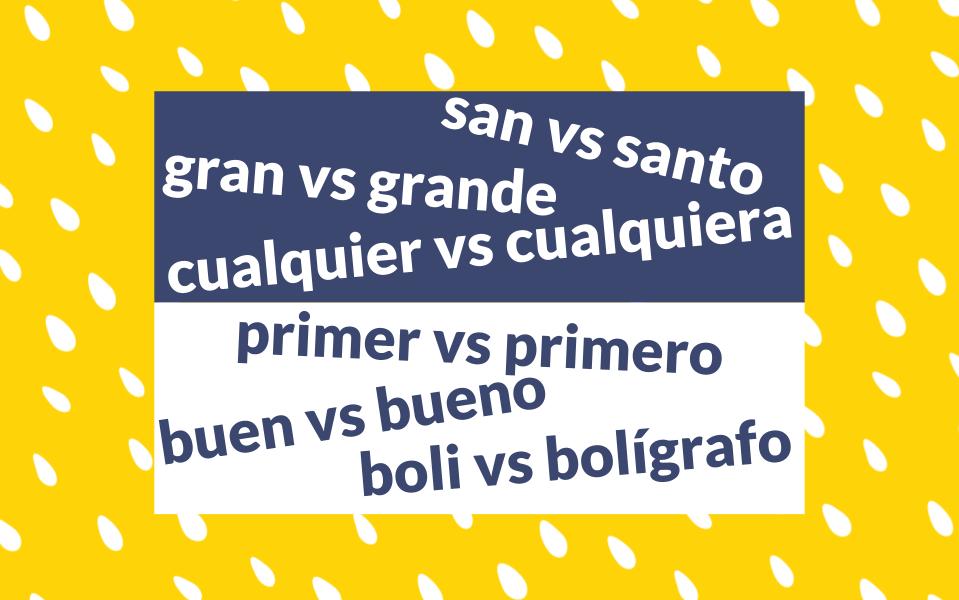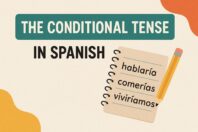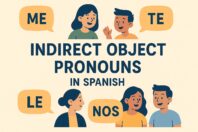Apocopation in Spanish: Clipped Words like Buen vs Bueno

Get our free email course, Shortcut to Conversational.
Have conversations faster, understand people when they speak fast, and other tested tips to learn faster.
More infoIn Spanish, just as in English, some words are shortened in everyday speech just to make them easier to pronounce while speaking. Some words are also clipped for grammatical reasons.
If you’re trying to think of an example in English, what words would you use for going to the gymnasium to work your abdominal muscles? Gym and abs! Those are clipped words in English. In Spanish, we use these kinds of words too.
In today’s post, we’ll start by defining the meaning of apocopation in Spanish. Then we’ll go one by one through the important Spanish apocopated word forms. We’ll cover the cases of apocopation in Spanish which are grammatically obligatory, as well as the colloquial forms that we generally use in our everyday conversations.
Let’s chop the chit-chat and dive into the world of shortened words in Spanish!
Apocopation in Spanish: Meaning
Apocopation refers to the shortening of a word by removing its final letter or letters. An apocopated word still retains its meaning.
Apocopation in Spanish occurs in informal speech, for example when we use boli instead of bolígrafo for a pen. In addition, Spanish apocopates many words for grammatical reasons. In other words, there are certain words that have to be clipped to respect certain grammar rules.
The most common of these grammatically-obligatory apocopated Spanish words drop the final -o when they’re followed by a masculine noun. For example, the Spanish word for first, primero, becomes primer when used as an adjective before a masculine noun.
Other words are shortened based on their role in a sentence or on the word that comes after them.
Now we’ll present you with a list of the most common apocopated words in Spanish.
Grammatically-obligatory cases of Apocopation in Spanish
Many of the important cases of clipped words in Spanish are grammatically obligatory. For the most part, these are Spanish adjectives whose apocopated form is used when placed before the noun, and whose full form is used when placed after the noun.
Keep in mind that the focus of today’s post is on the clipped forms of these adjectives. We’ll use the masculine singular form ending in -o when demonstrating the full forms in our examples, but remember that these same words can generally take three other forms to agree in gender and number with the nouns they describe: -a, -os, and -as.
Now let’s go through these must-know words that require apocopation in Spanish.
Buen vs Bueno
Good
Buen is the clipped version of bueno in Spanish, both of which mean good. Bueno must be shortened to buen when used before a singular masculine noun.
- Pedro es un buen padre. – Pedro es un padre bueno. – Pedro is a good father.
- Hoy es un buen día. – Hoy es un día bueno. – Today is a good day.
Mal vs Malo
Bad
Mal is the shortened form of malo. These adjectives mean bad. Just as we saw with bien, mal is the version that must be placed before singular masculine nouns.
- Benjamín es un mal amigo. – Benjamín es un amigo malo. – Benjamín is a bad friend.
- Nico es un mal chico. – Nico es un chico malo. – Nico is a bad boy.
Gran vs Grande
Great vs Big
Gran is the apocopated form of grande. Gran functions a bit differently than the previous adjectives we’ve seen, in that it goes before any singular noun, whether masculine or feminine. The meaning changes too: the best translation of gran in English is great, while grande is translated as big.
- Ese fue un gran gato. Me acompañó siempre. – That was a great cat. He always stayed with me.
- Ese gato es demasiado grande. No se puede sentar en mi silla diminuta. – That cat is too big. He cannot sit on my tiny chair.
There’s one important exception to the rule on the apocopated form: when grande is preceded by the adverb más, even when it is placed before a singular noun to mean great, it should not be clipped.
- Ayer tuvimos la más grande oportunidad de nuestras vidas. – Yesterday, we had the greatest opportunity of our lives.
Un vs Uno
A / An vs One
You surely learned uno when studying the numbers in Spanish. When placed before a singular masculine noun, its apocopated form un acts as an indefinite article, translated as a or an in English.
- Sabemos que necesitas un cuaderno nuevo. – We know you need a new notebook.
- Queremos que elijas un libro que te guste. – We want you to pick a book that you like.
Primer vs Primero
First
Primero is the ordinal number meaning first in Spanish. Like several of the other apocopated words we’ve seen so far, primero becomes primer before a masculine singular noun.
- El primer amigo que tuve cuando llegué aquí fuiste tú. – You were the first friend I had when I arrived here.
- Este es el primer concierto al que ha ido en su vida. – This is the first concert he has gone to in his life.
Tercer vs Tercero
Third
Tercero is the ordinal number meaning third in Spanish, and its apocopation in Spanish functions in the same way as primero: tercero becomes tercer when preceding a masculine singular noun.
- Todos fuimos al tercer piso a buscar a nuestros hijos. – We all went to the third floor to look for our kids.
- El martes es el tercer día de la semana. – Tuesday is the third day of the week.
Cien vs Ciento
One hundred
Ciento is Spanish for the number one hundred. When used before any noun, or when used with multiplication in a mathematical equation, ciento is clipped to become cien.
- Ya recorrimos cien millas. – We already travelled one hundred miles.
- Todos los estudiantes tienen que leer más de cien libros en la Universidad. – All students must read more than one hundred books at university.
When ciento appears as part of a bigger number, it is not apocopated. Check our post on numbers in Spanish for the full lesson on counting.
- One hundred and fifty – 150 – Ciento cincuenta
Algún vs Alguno
Some, Any
Alguno is an indefinite adjective in Spanish to denote some or any of the noun which follows. Its apocopated form drops the final -o and also takes an accent on the ú. We use algún before singular masculine nouns. Alguno and its other forms can also be used as a pronoun.
- ¿Tienes algún libro interesante para mí? / Sí, para ti, creo que tengo algunos. – Do you have any interesting book for me? / Yes, for you, I think I have some.
Ningún vs Ninguno
No, None, Not any
The case of ninguno is just the same as alguno that we just saw, but with the opposite meaning. It always needs to be used with no to denote a negative, so the English translation of the phrase can be variants of none or not any. We have a full post that breaks down all the details on ningún vs ninguno.
- No quiero ningún libro de esos. No me interesa ninguno. – I don’t want any of those books. None of them interests me.
Cualquier vs Cualquiera
Whichever, Whatever, Any vs Whichever, Whatever, Any, Any one, Anyone
Cualquiera can be used as either an adjective or a pronoun. It doesn’t have different feminine or plural forms, but it does need to be apocopated when used as an adjective before nouns: cualquiera is clipped to cualquier before either masculine or feminine singular nouns.
- Está bien que vengas cualquier día por la mañana. / Para mí, un medio día cualquiera estaría bien. – It’s OK if you come any day in the morning. / For me, any midday would work.
- Cualquier ayuda que puedan darnos será útil para nosotros. Agradeceremos a cualquiera que pueda ayudarnos. – Any assistance you may provide to us will be useful. We’ll be grateful to anyone who may be able to help us.
Tan vs Tanto
As much as, So, So much, So many
Tan and tanto are often confused since they are used in very similar circumstances to make comparisons. Tanto can be used as an adjective, an adverb, or a pronoun, whereas tan is only used as an adverb. Tanto is generally used to emphasize quantities, while tan is used to talk about qualities.
- Ella era tan bella que todos volteaban para verla. – She was so beautiful that everybody turned around to see her.
- Matías es tan alto como Gastón. – Matías is as tall as Gastón.
- Si esta vez estudias más, el resultado del examen será tanto mejor que el anterior. – If you study more this time, the result of the test will be so much better than the previous one.
- Si no sigues las instrucciones, el resultado será tanto peor. – If you don’t follow the instructions, the result will be so much worse.
We mention tan and tanto in our post on comparisons in Spanish. We also have a full video on our BaseLang YouTube channel going into all the details on when to use tan vs tanto.
Muy vs Mucho
Very vs A lot
Muy is the apocopation of mucho in Spanish. Muy is an adverb, translated into English as very. Since muy modifies other adjectives and adverbs, it should placed before them. Mucho is used with nouns and verbs, and is translated as a lot in English.
- La película que vimos juntos fue muy interesante. – The movie we watched together was very interesting.
- Creo que el día de mañana será un día muy emocionante. – I think that tomorrow will be a very exciting day.
- Los bancos tienen mucho dinero siempre. – Banks always have a lot of money.
For a full lesson on this word pair, check out our detailed post on muy vs mucho.
San vs Santo
Saint
Santo is a masculine religious adjective used to honor beatified figures from history. When preceding the name of a male saint whose name doesn’t start with To- or Do-, Santo drops the -to and becomes San.
- Santo Tomás
- Santo Domingo
- San Jerónimo
- San Pablo
- San Julián
We have a full post on titles and honorifics in Spanish, in case you’re interested in other specific words used to show reverence.
Apocopation in Spanish in Everyday Language
So far we’ve studied cases of apocopation in Spanish that follow certain grammatical rules, where the clipped forms of the Spanish words are obligatory.
Now we’ll see a list of words that are shortened in Spanish, but just informally. These clipped Spanish words are used in rapid speech or to give a casual tone to the conversation. You’re therefore likely to hear many of these shortened forms in everyday speech, but remember that these apocopations are always optional.
There’s no grammatical rule behind these forms. They’re comparable to how you’d probably talk about your “pecs” and “abs” at the gym, rather than your “pectoral muscles” and your “abdominal muscles.”
| Apocopation in Spanish | Full Word | English Word |
| El auto | El automóvil | Car |
| La bici | La bicicleta | Bicycle |
| El celu | El celular | Cell phone |
| La foto | La fotografía | Photography |
| La mini | La minifalda | Miniskirt |
| La moto | La motocicleta | Motorbike |
| El refri | El refrigerador | Refrigerator |
| La tele | La televisión | Television |
| El super | El supermercado | Supermarket |
| El boli | El bolígrafo | Pen |
| El / La profe | El profesor / La profesora | Teacher |
| Tranqui | Tranquilo/a | Relaxed |
Conclusion: Apocopation in Spanish
So far so good! At this point, we’ve covered pretty much everything you need to know about apocopation in Spanish.
We started off by simply defining apocopation, which refers to the phenomenon of shortening a word while maintaining the full word’s meaning.
We spent most of the post going through common apocopated words in Spanish and explaining the grammatical rules behind each word pair: we covered a lot of adjectives like bueno and malo, we saw a few numbers like ciento and primero, and we saw several other versatile words like alguno and ninguno. As always, we provided examples for each one, along with links to many of our related posts that cover the specific words in greater detail.
We rounded out the post with a list of clipped Spanish words that are commonly used in informal speech by native speakers.
To finish up, we’ll leave you with a set of exercises to practice the cases of Spanish apocopation you’ve just learned!
Exercises
Choose the correct option. The correct answers and translations are below.
1. Tomás es muy buen / bueno alumno.
2. No me des ningún / ninguno ventilador.
3. El día del traductor es el día de San / Santo Jerónimo.
4. El mate está muy / mucho caliente.
5. La calle estaba tan / tanto oscura que teníamos que encender las linternas.
6. Cualquier / Cualquiera taza me gusta.
7. El primero / primer día de clases siempre es el más difícil.
8. San Martín fue un gran / grande prócer.
9. Todos sabemos que eres un mal / malo perdedor.
10. China es el tercer / tercero fabricante de celulares en el mundo.
Answers
1. Tomás es muy buen alumno. – Tomás is a very good student.
2. No me des ningún ventilador. – Don’t give me any fan.
3. El día del traductor es el día de San Jerónimo. – Translator’s Day is on Saint Jerome’s Day.
4. El mate está muy caliente. – The mate is very hot.
5. La calle estaba tan oscura que teníamos que encender las linternas. – The street was so dark that we had to turn on our flashlights.
6. Cualquier taza me gusta. – I like any mug.
7. El primer día de clases siempre es el más difícil. – The first day of school is always the hardest one.
8. San Martín fue un gran prócer. – San Martín was a great founding father.
9. Todos sabemos que eres un mal perdedor. – We all know you’re a sore loser.
10. China es el tercer fabricante de celulares en el mundo. – China is the third cell phone manufacturer in the world.



